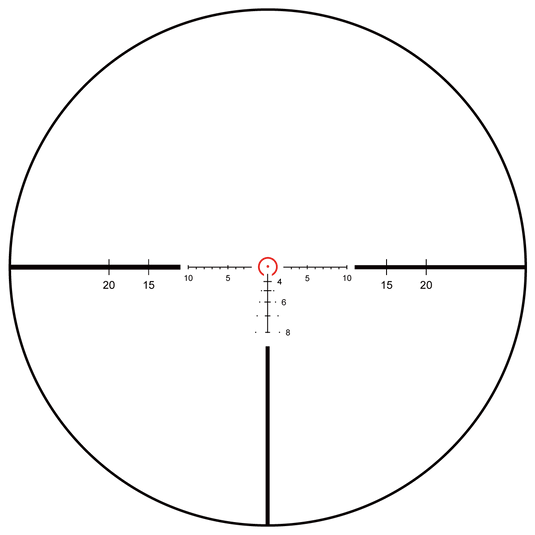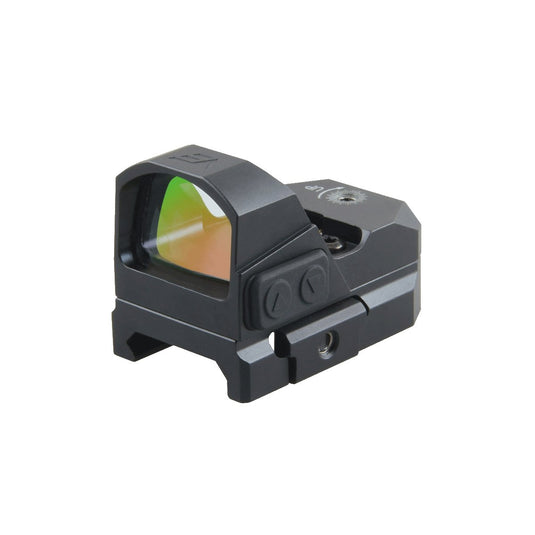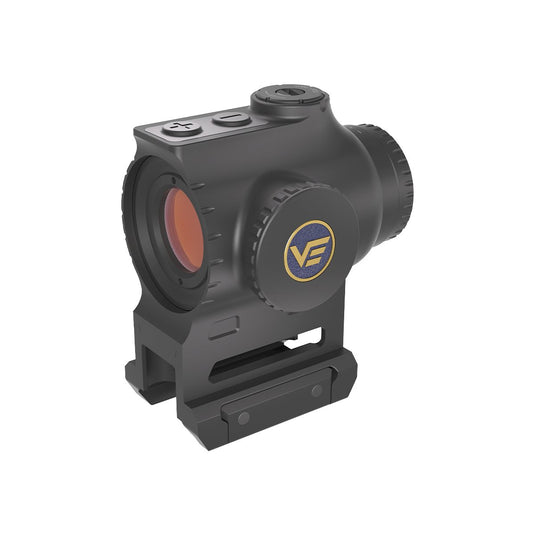Mountain hunting: Mountain hunting is the pursuit of game in mountainous terrain, characterized by steep slopes, elevation changing, and rugged conditions. Hunters need specialized skills in navigation, stalking, and precision shooting and also
Distance: Mountain hunting often involves shooting at mid to long distances, typically ranging from 100 to 350 yards. It occasionally extends to 500 yards or more if conditions allow and the hunter is skilled and experienced.
Time: The best times for mountain hunting are usually early morning and late afternoon. However, during specific periods like the elk rutting season, midday hunting can also be highly effective.
Animal: Mountain hunting offers a variety of game species, depending on the region and specific mountain ranges, like elk, mule deer, bighorn sheep, and mountain goats.
Features of Scopes You Should Consider
Focal Plane: Mountain hunting frequently engages long-range shooting. The terrain may demands quick adaptability to varying distances, therefore FFP scope may be more advantageous. It enables shooters to make precise windage and elevation adjustments without needing to re-estimate distances. This scope type maintains consistent holdovers and adjustments across all magnification levels to quickly delivering accurate shots across varying distances.
Magnification: It largely depends on your personal shooting preference, but a 2-16x scope is generally recommended. This range offers flexibility for shooting from close to longer distances, 100 to 400 yards. At 2x magnification, the scope provides a good field of view for closer shots, while 12x or 16x magnification enhances detail observation for distant targets.
Fiber/Etched reticle:
Considering that mountain hunting usually engages long-range shooting, it may be beneficial to implement a reticle with distance estimation and bullet drop compensation. Usually etched reticle would offer more complex pattern. Another benefits of etched reticle is its durability. Mountain hunting may encounter variable weather conditions and different terrain changing, an etched reticle would bring more convenience. All VE etched reticle provides illumination for daylight bright or low light condition.
Fiber-optic reticles improve visibility in diverse lighting conditions by providing a brightly illuminated center dot, facilitating enhanced aiming precision in low-light scenarios. Besides, since mountain hunting may happens during the midday, when the sunlight is super strong, fiber reticle would be highly recommended. However, it is generally challenging to incorporate complex reticle patterns with fiber-optic technology. Consequently, this limitation may result in less versatility for long-range shooting situations, where more detailed reticle patterns are beneficial.
Reticle Pattern:
For mountain hunting, a BDC (Bullet Drop Compensating) reticle is preferred due to the common long-range shooting. The Christmas tree and MIL dot reticles are effective options, as they allow for both range estimation and bullet drop compensation. These reticles work particularly well in scopes with an FFP (First Focal Plane) configuration, where the reticle size adjusts with magnification, maintaining accuracy across all ranges. Both reticles are straightforward to use, providing hunters with versatile tools for precise shooting in challenging terrain.
Light transmission:
The light condition within the mountain terrain are unpredictable, and sometimes can be dim. Many animals are active at the low light condition, like dawn, dusk. Therefore, a scope with high light transmission, over 90%, is recommended. A high light transmission rate refers to a sharp and crisp image, which enables hunters to acquire a more detailed image from a distance and take a precise shot.
Recoil:
Shooters will need to consider the impact of recoil on the scope. A scope with sufficient shock resistant, at least 750G, will prevent unexpected issues during use. All VE scopes are at least 750G.
Weight:
Weight is an important consideration for mountain hunting, as hunters must carry their equipment during climbs. However, the differences in weight may not always be significant, around 200-300g. Typically, a heavier scope suggests greater durability due to robust materials, a larger tube diameter which allows for a wider adjustment range, and high-quality lenses that can add weight. Therefore, if shooters prioritize the shooting accuracy, the additional weight of a durable, well-equipped scope may be a worthwhile trade-off.
Zero stop/Balistic Turret:
When hunting in the mountains, due to the changing terrains, you may often need to adjust your scope's turret. Therefore, a zero stop feature is essential to help adjust the elevation or windage for bullet drop compensation to ensure precise shot.
Or it's even better to have a DIY turret for your hunting firearms to enhance the shooting efficiency. The customized turret would allow hunters to do the bullet drop compensation at predetermined distances, so that they don't need to calculate before each shot. That further maximize the accuracy and speed even in a dynamic environments.

Sunshade (with product link here)
As noted, hunters might choose to hunt at noon or in snowy mountainous areas based on animal behavior or personal preference. During these times, intense sunlight can create significant glare. A sunshade may be essential to reduce the glare, helping hunters maintain clear vision and improving their efficiency despite the challenging light conditions.
Summary:
We would recommend you to pick an FFP scope with high light transmission and delicate BDC and range estimation reticle. 3x to 16x magnification is a reasonable range. ED glass is highly recommended, while HD also works well.





































